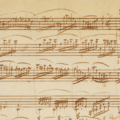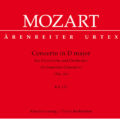The discovery of the autograph manuscript of a Mozart’s sonata is, by itself, an exciting news, but since the sonata is one of the best known and appreciated by the audience – the sonata in A major KV 331 – things are going to get interesting. This happened in the early 2014, in the Széchényi National Library, Budapest, where the Mozart’s scholar and director of the music collection of the Library Dr. Balázs Mikusi found an ample manuscript fragment by Mozart himself.

The composer Wolfgang Amadeus Mozart
This happening is even more interesting if we consider that only the last leaf of the famous Rondò Alla Turca autograph was known, whereas the leafs identified by Dr. Mikusi comprise a substantial part of the sonata: mm. 55-134 of the Andante grazioso, the Menuetto and mm. 1-10 of the Trio. Having lots of source available makes it possible to compare together both the different printed version and the manuscript. This is what publisher Bärenreiter did with the new edition of KV 331. The purpose is as simple as fundamental: to make accessible for scholars and players all the sources as close as possible to the original version of the sonata therefore will be «the users to compare them and draw their own conclusions».
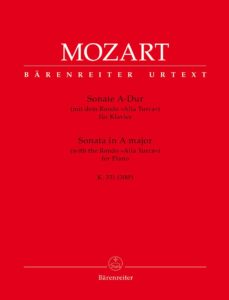
Mozart, Sonata in A major KV 331, Bärenreiter Verlag.
The present edition consists of three parts: a really accurate preface by Mario Aschauer, with some notes on performance practice, the musical text of the first edition Artaria (1784) and the musical text of Mozart’s original manuscript recently discovered. The reason why these sources were chosen is clarified in the abovementioned preface, in which Aschauer lists and evaluates all the sources available to the modern scholar (briefly: the Artaria edition is more considered because the editions of the others publishers were based on it and often occurs that these editions differ from original Mozart’s musical text and therefore bear no value as a source for the present edition). Also the choice to keep separated the two main sources of KV 331 is illustrated by Aschauer himself: since there are between the manuscript and the first print edition differences even rather important and is not possible to establish how this differences came about for lack of absolute sources, one might say that «from today’s perspective the “work” sonata is thus located between the texts of the autograph and the first edition: there is not one single ultimate musical text but rather both manifestations of the work represent historical realities that need to be documented in a critical edition».
In this last sentence lies the reason why this edition will be an indispensable instrument for studenst and scholars: it does not preclude anything, but provides to its users the best instruments at our disposal. With this work Bärenreiter has made every other edition obsolete because it definitively eliminated the undeserved and apocryphal additions reported in other publications, persistent since the late 18th century; it organised an strong hierarchy of the sources and it has mantained the original text unchanged as much as possible, even though it had to be adapted to the modern performance practice. Thanks to this meticulous work of “restoration” that wiped out the historical mistakes and from the pianistic tradition, the publisher returned us the text of KV 331 presumably very close to Mozart’s intention, but is also full of surprises. Of course, this original version isn’t “another one” KV 331, the sonata remains the very one we know. However, in this “new” text there are some truly important variants compared to the usual text: about dynamics, harmony or simply in the melody or in the rythm.
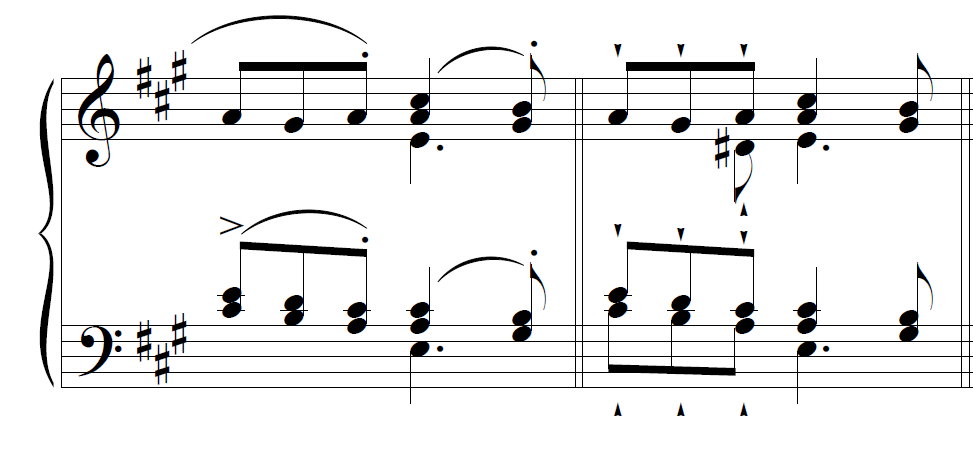
To the left: m. 84 as usually reported. To the right: the same passage in the original Mozart manuscript.
Without listing each one variant, an interesting example about dynamics could be m. 84 from the first movement: traditionally the first three notes are played with a slur, but Mozart marks them with strokes (actually the strokes are on every single voice). It’s just a detail, but it change the character of the Variation IV, turning it decisively to a brilliant and covertly ironic style. A most important (and enjoyable) difference is in the second half of the Menuetto, mm. 24-26: albeit are usually played in the minor mode, with the natural c, in the first edition as well as in the autograph these three measures are in the major mode. Indeed, as we can see in the facsimile inserted in the present edition, Mozart had the foresight to add the sharp to the c of m. 26 as courtesy accidental, precisely to avoid the passage to the minor mode. This harmonic style, certainly a shock for anybody who expects the minor mode, is highly suggestive and more unusual: the first part of the Menuetto ends, everything by the book, in e major (the dominant of a major), but then turns immediately on b minor, then goes again on e major – and not on a minor! – in order to create a playful harmonic instability that solves with the return to the main key at m. 31.
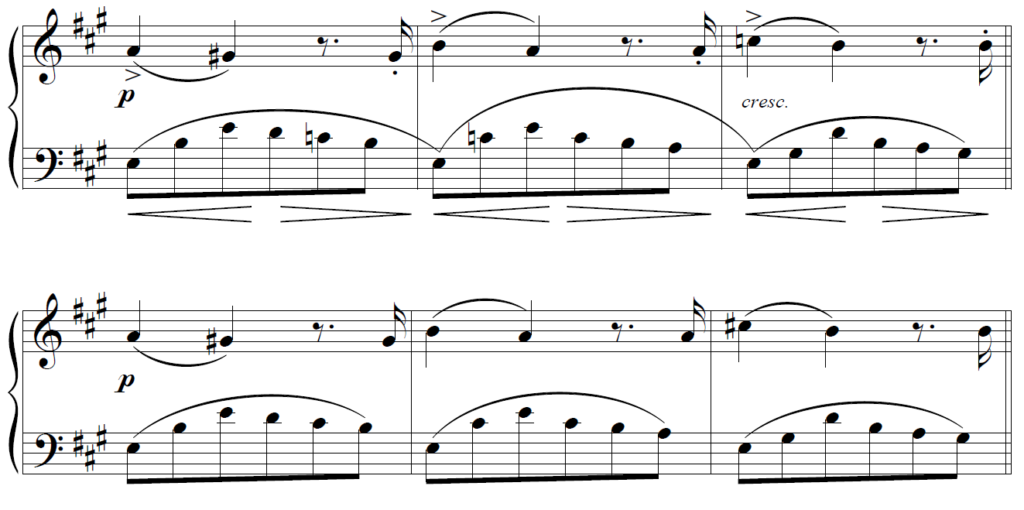
Menuetto, mm. 24-26. Above the Breitkopf & Härtel version; below the same measures from Mozart’s manuscrtip.
These are only two of the multiple examples could be made, however it must be underlined that the present edition can arouse a long debate too: the performance practice in the 18th century, in particular it makes one wonder about the character of 18th century music, with what state of mind must be performed. In the light of the two “original” texts of KV 331, it is at once clear that is a less pianistic work as we would expect, fact that we deduce for example by the use of the dominant seventh chord: unlike those several editions reported, Mozart favours it without doubling the fundamental bass (except in certain clearly defined cases, such as the m. 36 of the first movement, where the fundamental bass is doubled in orther to make the audience realise that the variation is over) to obtain a less biting dissonance. Less biting but not necessarily “thin”, adjective that is often associated with 18th century music. This edition invites us, kindly but resolutely, to think once more to our aesthetic idea of “18th century sound” and reopen a debate that today, thanks to the accurate and methodical commitment of Bärenreiter, acquires new and highly important sources.
lfmusica@yahoo.com
- Pisa celebra il “suo” Guglielmo Tell - 4 Marzo 2020
- “Don Giovanni” al Teatro Verdi di Pisa, un succès de scandale - 27 Gennaio 2020
- “Ernani” ritorna al Verdi di Pisa in cappa e spada - 17 Dicembre 2019

